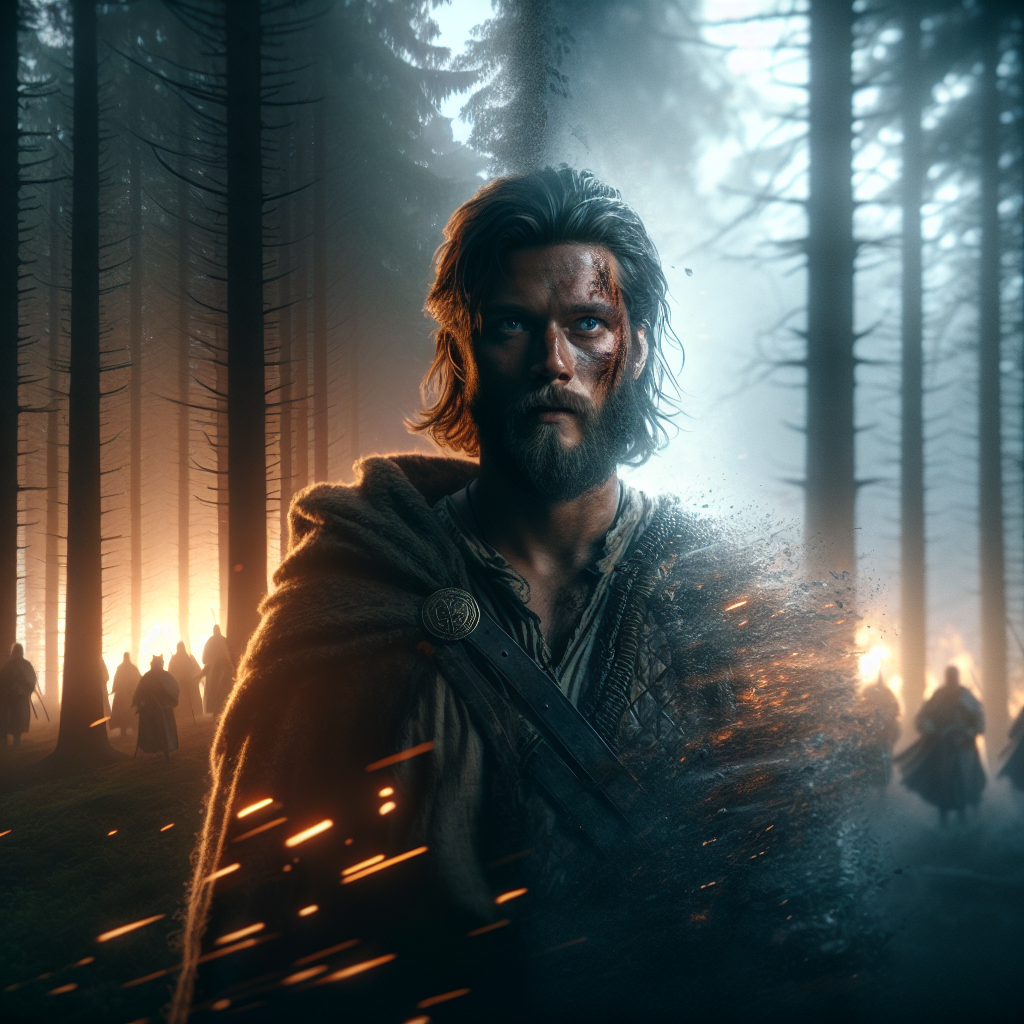
.
.
**Title: The Last of the Rite**
In the heart of the Hollowpine Forest, nestled in a secluded valley wreathed by mist and shadow, lay the village of Dereth—an ancient settlement steeped in solitude and ritual. Its people were hardy, living close to the rhythm of nature, and bound by old customs passed down through countless generations. Among these was the Rite of Elderleaf: a grueling trial of isolation and survival, undertaken by every boy on the cusp of manhood.
For 17-year-old Kael, the day his elders marked his forehead with the ash of the hearth and sent him into the Deep Green was the proudest of his life. With only a flint, a dagger, and the cloak of his lineage, he stepped into the woods to find what lay buried in himself—only to return a man.
The rite was supposed to last twelve nights, after which a signal fire atop the central hill would beckon him home. But the fire never came.
**
Unbeknownst to Kael, a shadow had fallen on Dereth just days after his departure. A faction called the Federation of the Crescent Vale, an alliance of neighboring villages turned authoritarian regime, descended upon the mountaintop hamlet. Dereth’s warriors fought valiantly, but they were outnumbered. Within hours, the old traditions were outlawed, the Council of Elders executed or exiled, and the Rite of Elderleaf banned as a barbaric practice.
The worst betrayal came from within. Roran, a villager Kael had once trained alongside, had failed his rite years before. Midway through the ordeal, he had returned—broken, ashamed. Though Dereth had cast him out, the Federation had found use for him. He had told them of Dereth’s defenses and secret paths into the village. In exchange for status among the conquerors, he’d given them his home.
Kael remained in the forest, unaware. Weeks turned to months. He learned to track without sound, to sleep lightly, to read the markings of storms in animal behavior. He lived with the silence, the cold, the loneliness—and came to master them.
He hunted, crafted his own clothes, built intricate traps, and passed trials more brutal than the elders had ever expected. Time lost meaning.
When he finally stumbled upon Dereth again, its stone walls draped with the blue and black banners of the Federation, he thought at first he had failed—that he had been gone too long to be remembered.
No one recognized the bearded, hardened youth who reemerged from the trees. The younger generation had never heard of the Rite. Dereth had changed.
**
Kael kept to himself. He bartered skins and meat for supplies, quietly building a life on the edge of the corrupted village. Word of his skill spread quickly—hunters watched with awe as he downed hart and boar with uncanny swiftness. Crops flourished where he advised, and sick villagers recovered with the herbs he sourced. He became a legend, “the boy who became beast.”
The central Federation council noticed. Officials visited, at first to question, then to recruit. Kael was offered posts of increasing rank—first as a scout, then an advisor, then a regional emissary. With each promotion, he was pulled further from Dereth—and further into the heart of the machine that had consumed it.
In the central city of Veldran, Kael saw his homeland framed as a “rebel outpost” in official documents. He read about strategies for rooting out “instability” in federated villages, most of which had outlawed similar rites. Patterns formed—each village that had fallen had done so at the hands of someone who had failed their traditional trials and traded that disgrace for Federation favor.
Then, in the Grand Archive, Kael found the sealed account of Dereth’s fall. The signature of betrayal was plain: Roran of Dereth, “strategic asset.” Rage, long-fermented, ignited.
Kael confronted Roran at a diplomatic gathering in the Silver Court, leaping over platters of fruit and emissaries to slam the man against a column. The altercation boiled into chaos. Guards seized Kael and dragged him to the stonework bowels of Veldran’s fortress: the Dusk Dungeons.
**
But Kael was no longer alone.
Among the Federation’s dominion lay other silenced villages—Ystwyth, Harrowdell, Mevenmoor—each with their own lost rites, stolen by traitors who had fled their failures. Within them still lived the last sons who completed their trials and bore the memory of the old ways.
News of Kael’s imprisonment traveled in whispers, then in campfires, then in drums.
Like embers fanned into flame, these last sons rose. They emerged from their own wilds—feral, cunning, silent warriors literate in survival and pain. They called themselves *The Emberborn*. Each wore the mark of their youth’s trial burned or carved into their skin.
They stormed Veldran under cover of night. Where guards faltered in panic, the Emberborn slid through shadows and smoke. The Dusk Dungeons cracked under their assault.
Kael, emaciated but unbroken, stepped into moonlight to behold the faces of kindred spirits—every one of them forged in pain, sharpened in exile.
Together, they had become the edge the Federation had feared all along.
**
In the years that followed, the Emberborn dismantled the Federation village by village—not out of vengeance, but to restore the freedom of ancient rites and the truths buried in the land. Across valleys and forests, traditions long silenced were once again whispered to the stars.
And Kael—once a forgotten boy of Dereth—was called not king, not conqueror, but something older:
The Last of the Rite.
And the First of the Flame.